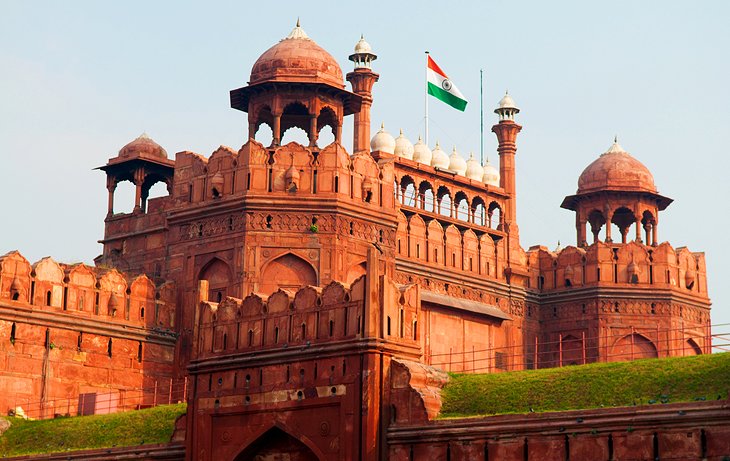As Delhi, the capital city of India, celebrates its rich history and cultural diversity, its top tourist places have played a pivotal role in shaping the societal fabric. From ancient monuments to modern attractions, these sites not only showcase the city’s historical significance but also contribute significantly to its socio-economic landscape. In this blog post, we will delve into the impact of the best and famous tourist places in Delhi, exploring their relevance, evolution, and potential future developments.

Delhi City in India
Relevance and Historical Significance:
- Red Fort: Delhi’s iconic Red Fort stands as a symbol of India’s struggle for independence. Its historical relevance transcends time, drawing millions of visitors annually. The fort not only serves as a reminder of the Mughal era but also hosts national events, fostering a sense of patriotism among the masses.
- India Gate: Built in memory of Indian soldiers who lost their lives in World War I, India Gate is a prominent landmark that holds immense emotional significance. Beyond being a tourist attraction, it serves as a gathering place for citizens, hosting events that bring attention to social issues and national pride.
- Qutub Minar: Qutub Minar, a UNESCO World Heritage Site, reflects the architectural brilliance of the Delhi Sultanate. Its towering presence attracts history enthusiasts and researchers, contributing to a deeper understanding of India’s medieval past.
Evolution of Tourist Places:
- Humayun’s Tomb: Originally built as a mausoleum for Emperor Humayun, this architectural marvel has evolved into a cultural space. The surrounding gardens now serve as a recreational area for locals, emphasizing the adaptive reuse of historical sites to meet the changing needs of society.
- Lotus Temple: The Lotus Temple, known for its distinctive lotus-shaped architecture, has become a global symbol of unity. As a Bahá’í House of Worship, it welcomes people of all religions, promoting interfaith harmony and understanding.
- Akshardham Temple: Akshardham Temple, a relatively modern addition, showcases the grandeur of Indian art and culture. Beyond its religious significance, it hosts exhibitions that educate visitors on India’s rich heritage and values.
Impact on Society:
- Cultural Exchange: Delhi’s tourist places serve as cultural ambassadors, attracting visitors from across the globe. This exchange fosters cultural understanding, breaking down stereotypes and building bridges between diverse communities.
- Economic Boost: The tourism industry in Delhi contributes significantly to the local economy. From hospitality to handicrafts, businesses around these tourist places thrive, providing employment opportunities and boosting economic growth.
- Preservation and Conservation: The influx of visitors also highlights the need for preservation and conservation efforts. The attention these sites receive ensures that steps are taken to protect and maintain the historical and cultural integrity of these landmarks.
Future Developments:
- Technological Integration: As we move forward, technological advancements will likely play a crucial role in enhancing the tourist experience. Augmented reality, virtual tours, and interactive exhibits could offer visitors a more immersive understanding of Delhi’s history and culture.
- Sustainable Tourism: With a growing emphasis on sustainable practices, future developments may focus on eco-friendly initiatives. From green spaces around monuments to eco-conscious infrastructure, Delhi’s tourist places could lead the way in responsible tourism.
- Community Engagement: Future developments should prioritize involving local communities in the management and promotion of tourist places. This ensures that the benefits of tourism are shared among all stakeholders and encourages a sense of ownership and pride among residents.
Conclusion:
Delhi’s best and famous tourist places have transcended their historical roles to become dynamic spaces that shape societal values, foster cultural exchange, and contribute to economic growth. As we celebrate the rich tapestry of Delhi’s history, it is crucial to envision a future where these landmarks continue to evolve, embracing technology, sustainability, and community engagement. Through mindful development and preservation efforts, these iconic sites will undoubtedly play a central role in shaping the narrative of Delhi for generations to come. Happy exploring!

Best and Famous 37 Tourist Places List in India
| Zone | States | |||
| North | Jammu & Kashmir
Himachal Pradesh |
Haryana
Chandigarh |
Delhi
Rajasthan |
Punjab |
| Central | Uttar Pradesh | Madhya Pradesh | Chhattisgarh | Uttarakhand |
| East | Bihar
Sikkim |
Odisha | Jharkhand | West Bengal |
| West | Gujarat
Goa |
Daman Diu | Maharashtra | Dadra Nagar Haveli |
| South | Karnataka
Tamil Nadu |
Kerala
Puducherry |
Andhra Pradesh
Andaman Nicobar |
Telangana
Lakshadweep |
| Northeast | Manipur
Meghalaya |
Mizoram
Assam |
Tripura
Arunachal Pradesh |
Nagaland |
| Southeastern | Ladakh | |||
